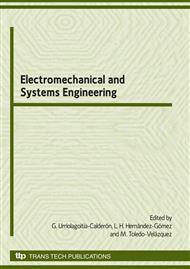p.21
p.27
p.35
p.41
p.49
p.55
p.61
p.67
p.73
Pneumatic Artificial Mini-Muscles Conception: Medical Robotics Applications
Abstract:
Actually, the pneumatic artificial muscles of McKibben type [1] show a great functional similarity with the skeletal muscle. A detailed analysis of the system has been performed to better characterize this similarity with the analogous dynamic behavior of the organic system. Such analysis has shown that the McKibben-type artificial muscle can be adapted to the Hill fundamental model [2]. Research regarding pneumatic artificial muscle with application to robotics has recently focused on mini-actuators for miniaturized robotics systems. This is specially true in the area of medical robotics, but an extension of miniactuator technology to other applications may be feasible, such as the development of artificial fine-motion limbs (hands and/or fingers). The present work details the artificial muscle miniaturization process developed in the LESIA laboratory, their behavior, their position and force control characteristics, as well as the possible applications of this technology to medical robotics.
Info:
Periodical:
Pages:
49-54
Citation:
Online since:
August 2009
Price:
Сopyright:
© 2009 Trans Tech Publications Ltd. All Rights Reserved
Share:
Citation:


